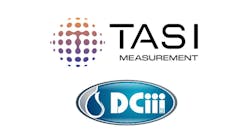The concept of flange ratings seems relatively straightforward. A 300 lb. flange can handle more pressure than a 150 lb. flange. Likewise, 600 lb., 900 lb., and 1,500 lb. flanges are constructed with progressively more metal and can withstand progressively more pressure. Flowmeters are typically specified with connecting flanges that correspond to the piping specifications. However, the details involved with pipe flange ratings can also be misunderstood because there are a number of factors that can impact the pressure capacity of a flange.
That said, approximately how much pressure can a 150 lb. flange withstand?
A. 270 PSIG
B. 180 PSIG
C. 150 PSIG
D. 75 PSIG
Commentary
The obvious answer might be that a 150 lb. flange can withstand 150 PSIG. After all, why would it be called a 150 lb. flange if it were not capable of withstanding 150 lbs. Well, it is not necessarily that straightforward.
Flanges can withstand different pressures at different temperatures. As temperature increases, the pressure rating of the flange decreases. For example, a 150 lb. flange is rated to approximately 270 PSIG at ambient conditions (Answer A), 180 PSIG at approximately 400 F (Answer B), 150 PSIG at approximately 600 F (Answer C), and 75 psig at approximately 800 F (Answer D). In other words, all of the answers could be correct, depending upon the operating temperature of the fluid. Similar information is available for flanges with other ratings.
Notwithstanding the above, how are flange ratings selected? Often they are copied from similar designs, but sometimes, they must be developed independently. In one such application, the maximum pressure of a fluid at ambient temperature was 220 PSIG. Using the information above, it can be seen that this fluid could be contained using 150 lb. flanges. Nonetheless, the process engineer specified and installed 300 lb. flanges in all of the piping. This may seem to be over-design, because 150 lb. flanges are rated for higher pressures. However, the relatively small cost differential associated with purchasing and installing the 300 lb. flanges in this new installation probably paid for itself over time by reducing the maintenance cost of the piping. It also reduced fugitive emissions because fewer leaks likely occurred with the 300 lb. flanges that had a higher pressure rating than the 150 lb. flanges. Reducing fugitive emissions and the probability of significant leaks are distinctly desirable in the chemical industry.
Additional Complicating Factors
Complicating the pressure ratings presented above is that flanges can be constructed from different materials, such as carbon steel, stainless steel, cast iron, ductile iron, and others. Flanges constructed from these materials can and do have different pressure ratings.
In some applications, the nature of certain fluids may dictate the use of certain flange ratings or types.
David W. Spitzer, P.E., is a regular contributor to Flow Control. He has more than 30 years of experience in specifying, building, installing, startup, and troubleshooting process control instrumentation. He has developed and taught seminars for over 20 years and is a member of ISA and belongs to the ASME MFC and ISO TC30 committees. Mr. Spitzer has written a number of books concerning the application and use of fluid handling technology, including the popular “Consumer Guide” series, which compares flowmeters by supplier. Mr. Spitzer is currently a principal in Spitzer and Boyes LLC, offering engineering, product development, marketing, and distribution consulting for manufacturing and automation companies. He can be reached 845 623-1830.
www.spitzerandboyes.com

